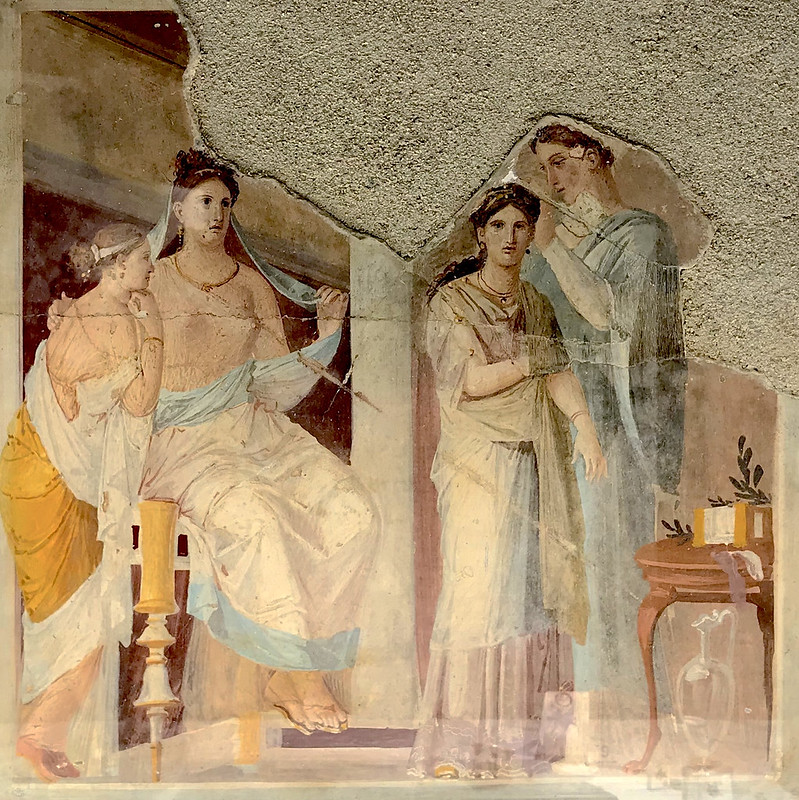In Stone and Story
Early Christianity in the Roman World
Materials available for professors by request only
Chapter 17: Piety & Pragmatism
Photo Gallery
Photos 17.1 through 17.3
In the Roman world, meals were often social events that enhanced both people’s sense of belonging and their sense of status. Photo 17.1 is a fresco showing women preparing themselves for an event of some kind, perhaps a gathering for a meal in a nearby household. A woman’s necklace (no doubt worn at social events such as meals) is displayed in photo 17.2. Although it consists of beautiful beads, notice also that it has two phallic pieces as well. These were not erotic images, of course; they helped offer the woman protection (as discussed especially in chapter 18 of In Stone and Story). A stylized depiction of a male and female enjoying a banquet is found in photo 17.3 (MANN 9554).
Photos 17.4 through 17.6
Social dining took place in a variety of situations — sometimes in fairly large dining rooms (such as the one in the House of the Cryptoporticus, shown in photo 17.4), or outdoor triclinia (as in photo 17.5), or in temple dining halls (such as the one attached to Pompeii’s Temple of Isis, shown in photo 17.6; see also photo 9.2; compare Paul’s discussion in 1 Corinthians 8:10 of “eating in the temple of an idol”).
Photo 17.7
Photo 17.7 of a snake fresco (the protective spirit of the location, at 1.11.11) amplifies what is displayed in figure 17.6 of In Stone and Story.
Class Activities
The issue of how early believers ought to have interacted with the pagan world regarding meals and pagan worship is fraught with complexities and nuances. Split the class into two groups and have a debate, one group taking the position that “pagan gods are nothing, so we can eat whatever we want,” and the other group taking the position that “spiritual powers are real and ubiquitous, and anything devoted to a pagan deity ought to be avoided.”
Discussion Questions
- How does piety in the ancient pagan world differ from modern piety where you are from? How is it similar? What aspects of modern piety correspond to the lares of the ancient world?
- People wanted to be seen to show homage to various lares and deities. Why was this the case? How does this differ from modern worshipers today? In what ways is it similar?
- What may have been contentious about the prominence of women in important roles within early Jesus groups? How does this differ from a modern Christian experience? How is it similar?

